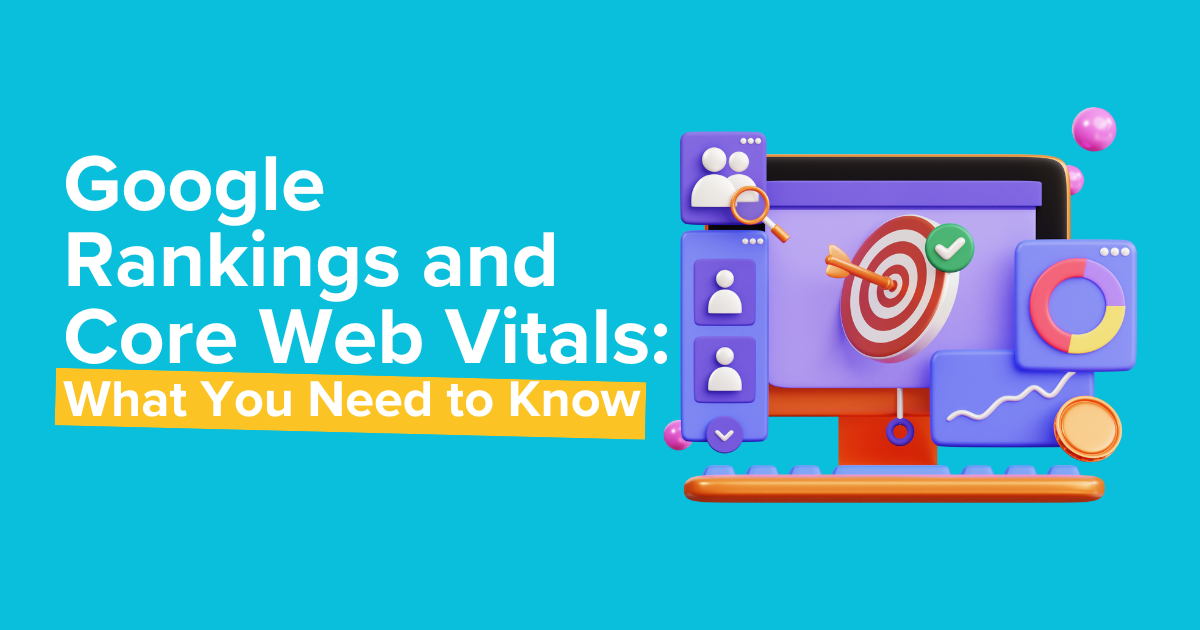


Mel Gibbons
13 May, 2021

Originally scheduled for May, the on-page experience update will start playing a role in search rankings from the end of August — with the aim of the gradual roll out to monitor the impact of any unexpected problems.
The new update will see Google taking into consideration a website’s page loading speed, responsiveness and visual stability together with several other page experience metrics in order to determine ranking.
In a nutshell, page experience is a set of signals that aim to understand and measure how a user will perceive the experience of a specific web page.
Page experience considers factors such as if a page loads quickly, displays and performs well on mobile devices, has intrusive content such as poorly executed ads and if it has content moving around as the page loads.
Also Read: Major Google search algorithm updates January – July 2021
When it comes to Google rankings, page experience is made up of several existing on-page experience metrics:
Mobile-friendly — your page should be optimised for viewing on mobile devices as well as desktop. Google offer a free mobile-friendly health check.
Safe browsing — your pages and website should not contain malicious or deceptive content. You can run a free Google Security Issues Report here.
HTTPS — your site should be secure using a HTTPS connection.
No intrusive interstitials — The content on your pages should be easily accessible to the user and should not use advertising techniques that are distracting or interruptive. If one page on your website is flagged as having a bad ad experience, all pages are considered to have a bad ad experience.
Core Web Vitals — The key part of the new Google update, these metrics are further explained below.
Essentially, Core Web Vitals are page experience metrics implemented by Google to determine what type of experience visitors get when they land on your page.
For example, Google will use the metrics to determine if your page is loading fast enough to prevent people from bouncing. If it’s not, Google could penalise your website’s ranking and your website could be replaced in search results by a website that is loading correctly.
Page loading — Largest Contentful Page (LCP) measures loading performance. To provide a good user experience, aim to have LCP occur within 2.5 seconds of the page starting to load.
Interactivity — First Input Delay (FID) measures interactivity. To provide a good user experience, pages should have a FID of less than 100 milliseconds.
Visual stability — Cumulative Layout Shift (CLS) is a new metric that measures visual stability. It considers whether a page is stable when it loads — that is, are there images, content or buttons moving around the page as it loads. To provide a good user experience, you should aim for your pages to maintain a CLS of less than 0.1.
Many websites already offer a user experience that satisfies these metrics and if you’re one of them you likely have nothing to worry about other than continuing to provide a good user experience and make improvements wherever possible.
To provide deeper and valuable insights that are actionable to improve your performance and ranking, Google will launch a Page Experience Report as part of this update in addition to Search Performance Report improvements, both available through Search Console.
Also Read: 10 Reasons Why Your Pages Are Not Getting Indexed On Google
Page experience is currently that — experience evaluated on each URL. The Page Experience Report will provide a summary of all user experience metrics for your web visitors.
The report combines the Core Web Vitals with other page experience metrics such as HTTPs security, mobile friendliness, safe browsing and content accessibility by means of non-disruptive advertising techniques.
The Page Experience Report provides valuable metrics that will allow you to quickly evaluate the performance of your pages and website without having to dig too deep and get bogged down in a minefield of data. For example, it will easily show you the percentage of URLs that offer a good page experience.
If you want to gain deeper insights, you can explore each of the metrics to determine further improvements that will enhance the performance of your URLs and overall website.
Moving forward, the Search Performance Report will feature the ability to filter pages that offer a good page experience. This functionality will be helpful to understand how the pages with a good experience compare to other pages on a site, thereby offering opportunities for improvement.
While overall page experience is critical, it does not outweigh the necessity of great and relevant content. Google will still carefully consider content and have made it clear that great content will still rank highly even if some aspects of page experience are sub-par.So, just because page experience is becoming increasingly critical when it comes to ranking in search results, don’t let your guard down when it comes to the content you’re publishing.
If you’ve been focused on providing a good user experience when it comes to your website, then there’s every possibility that this update won’t affect you too much.
However, with new metrics at play and user experience significantly growing in importance for search result ranking, it’s never been more necessary to review your website performance — and even more so, have a thorough understanding of Core Web Vitals and what this means for the ongoing performance of your website.
Also Read: Expert Guide to Choose the Right Digital Marketing Agency
Online Path has a team of digital whizzes that stay on top of critical updates and up to date with industry trends. We can take the hassle out of understanding the changes and implementing improvements so you can get back to business knowing that your online customers are getting a great user experience and your website ranks highly in search results.
Join hundreds of businesses boosting their knowledge with our monthly insights.
Contact us for an online marketing solution to build your brand and grow revenue.
Contact Us 1300 055 000
1300 055 000

